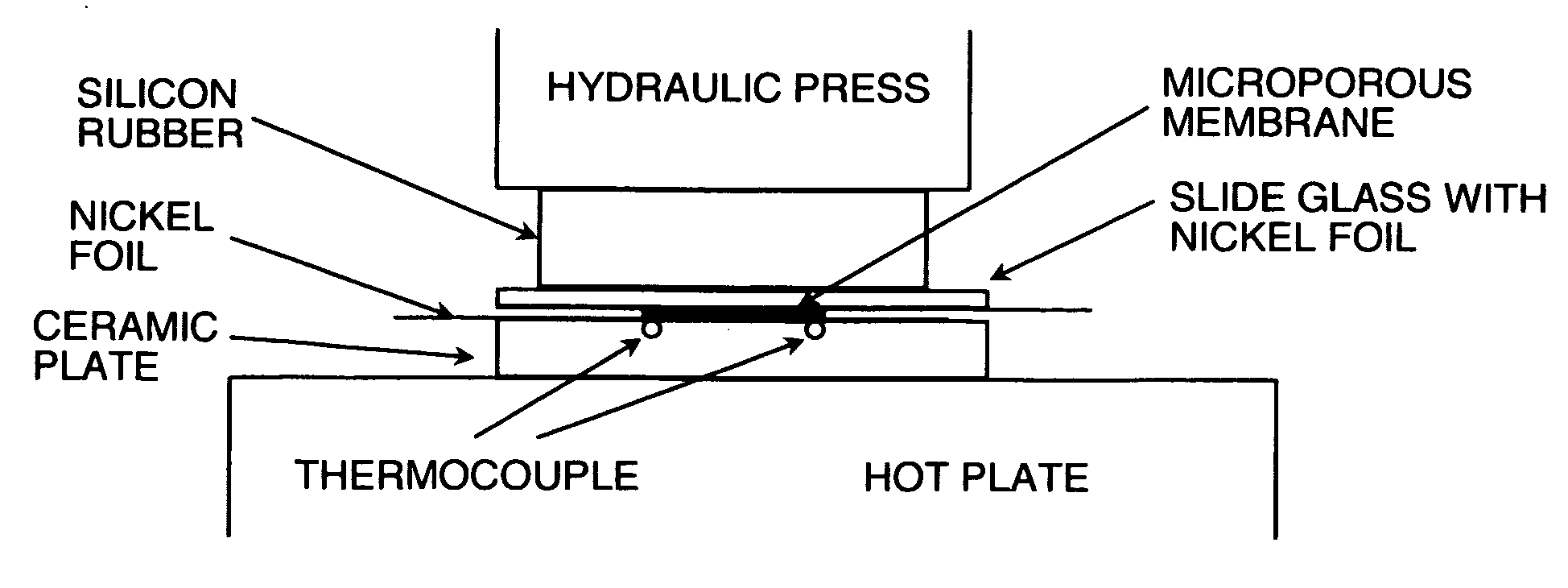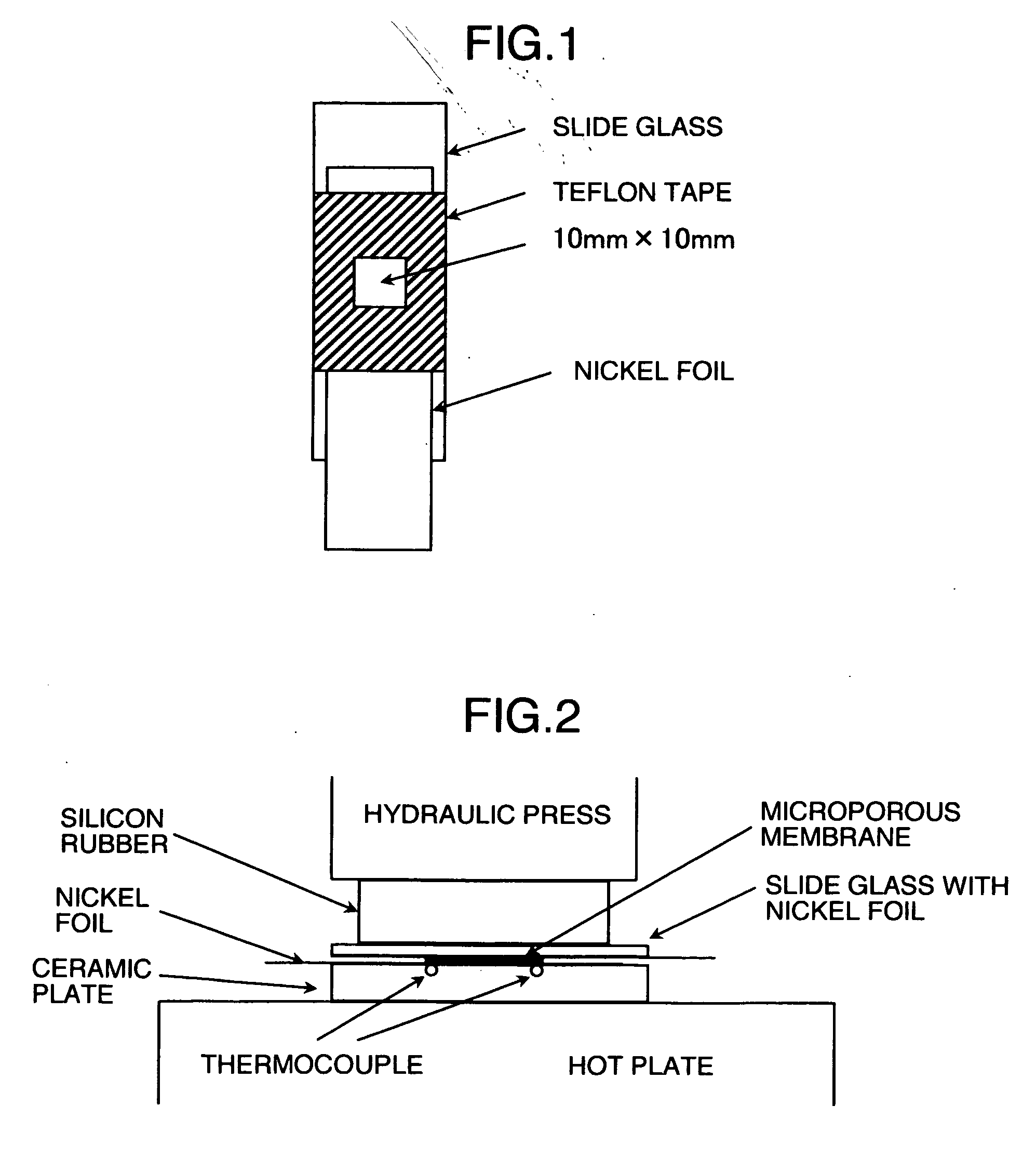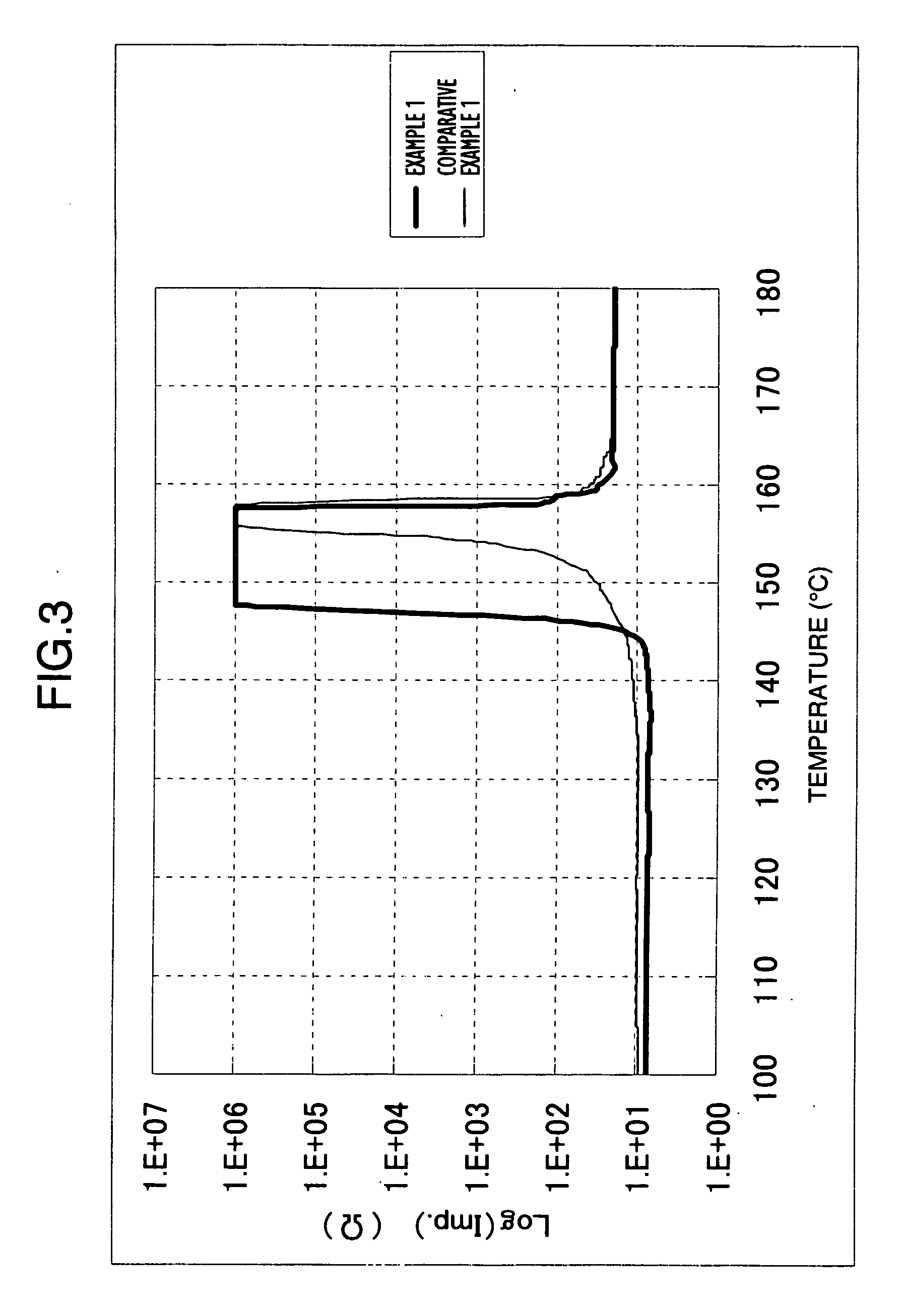Microporous membrane made from polyolefin
a polyolefin and microporous membrane technology, applied in the field of polyolefin microporous membrane, can solve the problems of high-power, long-life lithium ion secondary batteries, increased power consumption, short circuit at lower voltages, etc., and achieves excellent permeability, strength and safety, long-life and high safety. high
- Summary
- Abstract
- Description
- Claims
- Application Information
AI Technical Summary
Benefits of technology
Problems solved by technology
Method used
Image
Examples
example 1
[0129] 20% by weight of silica powder A, which was prepared by a dry process and had an average dispersion particle size of 0.25 μm, a 95 vol % cumulative dispersion particle size of 0.45 μm, a 5 vol % cumulative dispersion particle size of 0.15 μm, a ratio of cumulative dispersion particle size of 3.0, an oil absorption of 240 ml / 100 g and a primary particle size of 12 nm (see Table 1), 19.2% by weight of an ultra-high-molecular-weight polyethylene with [η] of 7.0 dl / g, 12.8% by weight of a high-density polyethylene with [η] of 2.8 dl / g and 48% by weight of dioctyl phthalate (DOP) were mixed and granulated. The granulated mixture was then kneaded and extruded with a twin-screw extruder equipped with a T die into a sheet 90 μm thick. From this molded sheet, DOP was extracted and removed with methylene chloride and the silica powder was also extracted and removed with sodium hydroxide to produce a microporous membrane. Two sheets of the microporous membranes were superposed, stretche...
example 2
[0130] Two sheets of the membranes, where the silica powder had been extracted, produced in the same manner as in Example 1 were superposed, stretched lengthwise to 5.0 times while heating at 115° C., and stretched widthwise to 2.2 times while heating at 133° C. The physical properties of the resultant membrane are shown in Table 2.
example 3
[0131] Two sheets of the membranes, where the silica powder had been extracted, produced in the same manner as in Example 1 were superposed, stretched lengthwise to 6.0 times while heating at 117° C., and stretched widthwise to 2.5 times while heating at 135° C. The physical properties of the resultant membrane are shown in Table 2.
PUM
| Property | Measurement | Unit |
|---|---|---|
| pore size | aaaaa | aaaaa |
| thickness | aaaaa | aaaaa |
| particle size | aaaaa | aaaaa |
Abstract
Description
Claims
Application Information
 Login to View More
Login to View More - R&D
- Intellectual Property
- Life Sciences
- Materials
- Tech Scout
- Unparalleled Data Quality
- Higher Quality Content
- 60% Fewer Hallucinations
Browse by: Latest US Patents, China's latest patents, Technical Efficacy Thesaurus, Application Domain, Technology Topic, Popular Technical Reports.
© 2025 PatSnap. All rights reserved.Legal|Privacy policy|Modern Slavery Act Transparency Statement|Sitemap|About US| Contact US: help@patsnap.com



